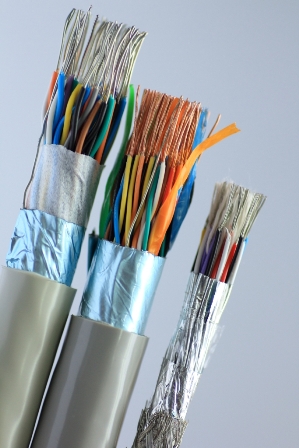A multi-pair shielded cable is a cable made up of a plurality of pairs of insulated wires disposed inside a sleeve of insulating material. Multi-pair shielded cable is used extensively in the communications and computer industries. Cables for high-speed data communications typically consist of multiple twisted pairs.
A twisted pair exchange cable comprises groups of individual conductor wires that are twisted together into pairs. A wide variety of cable arrangements having twisted conductor pairs are utilized in the telecommunication industry. The increased need for high-speed communication transmissions has placed a greater demand on twisted conductor pair systems.
When twisted pairs are closely placed in a cable, electrical energy may be transferred from one twisted pair of a cable to another twisted pair. Such energy transferred between twisted pairs is referred to as crosstalk. As operating frequencies increase, improved crosstalk isolation between the twisted pairs becomes more critical.
The TIA/EIA-568A or TIA/EIA 568B specification sets out transmission requirements, such as, for example, maximum acceptable crosstalk, skew and impedance mismatch values between twisted pairs, for cables that are classified as Category 5 (Cat. 5) and category 6 (Cat. 6) cables. In order to meet these requirements various techniques are employed to control crosstalk between twisted pairs and skew.
Multi-pair cables are used to transfer communication signals between, for example, components of a local area network (LAN) such as computers, telephones, and other devices. With multi-pair cables, the signals generated at one end of the cable should ideally arrive at the same time at the opposite end even if they travel along different twisted pair wires.
|
 |
|

 Multipair Cable
Multipair Cable
